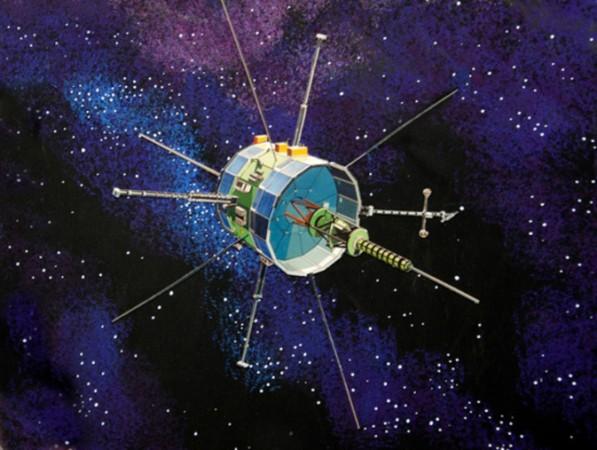
A team of citizen scientists managed to successfully re-establish contact with a satellite that has been loitering in the space for the 36 years now but has been out-of-contact with NASA for more than 15 years, according to News Tonight Africa.
The group named, ISEE-3 Reboot Project overcame many obstacles in order to connect with NASA's Vintage ISEE-3 Spacecraft but was successful in re-establishing contact on Thursday, 29 May 2014 from Arecibo Observatory in Puerto Rico. The team in the process also overcame a minor earthquake.
The satellite was launched from Earth in 1978 in order to examine the solar winds and bore its last contact with NASA in 1997 while performing exploratory missions.
After the completion of its mission, NASA in 1985 sent it to soar through the Giacobini-Zinner comet's gas-tail and later the Halley Comet's gas-tail in 1986. In 1999, ISEE's operators withdrew the spacecraft and stopped communication, thereby leaving it to remain in space.
A team of 20 experts led by NASA space-watchers Dennis Wingo and Keith Cowing went on to form the ISEE-3 Reboot Project. Keith Cowing is called the brain and inspiration behind the successful mission. Cowing, in 2013 discovered that the satellite would pass close to the planet Earth in August 2014, which made him realize the golden opportunity to re-establish the contact with ISEE 3 once again.
The mission was not an easy one as NASA had no hardware for communication with the satellite, which led the team to reuse some old systems. $160,000 was raised in a crowd funding campaign. With the help of the fund, the researchers tracked down the equipment and restored it with a radio dish.
"NASA congratulates the ISEE-3 Reboot Project team and everyone involved in establishing communications with the ISEE-3 spacecraft. The team now is finding out whether the scientific instruments on board might be functional. The contribution of the citizen science from ISEE-3, if recovered, will be highly dependent on the status of the instruments. This creative effort to recapture the spacecraft has already engaged citizen scientists and citizen spacecraft operators and is capturing the curiosity of the next generation," said Allard Beutel, NASA spokesperson in Washington in a news release.
The team is now in their next step is to make the satellite resume work from its long stillness. Moreover, the group admits that to make the satellite resume its work will not be an easy task and will take huge amount of accurate planning. The group is on the process to redirect the satellite's path before it loses its contact with the Earth once again.
The team is planning to install the ISEE-3 Spacecraft in the Earth-Sun Lagrange Point 1 (ES-1), which is a gravitationally steady spot around 930,000 miles (1.5 million kilometers) from Earth. The process will not be an easy task and will require immense planning to the smallest details. Before undergoing the process, the team will make contact with the satellite and check for the instruments that are working.
















